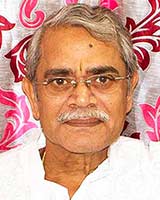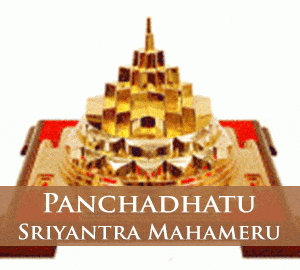The devotional poems of the two foremost female Krishna bhaktas, Aantaal and Mirabai, are congruent at this point to the discussion. Aantaal, regarded as one of the twelve Aalvaar Vaishnava saint-poets, lived in the ninth century in Tamil Nadu. Mirabai was born in 1498. It is said that as a child she was given an image of Krishna and grew so fond of if that her mother jokingly remarked that Krishna would one day be her bridegroom.
The significant common factor in the outlook of both Aantaal and Mira was that they looked upon Krishna as their husband. Both believed that in their previous lives they were gopis in Vrindavan. Mira considered herself to be the incarnation of the gopi Lalita, mentioned in the Bhagavata Purana. They both looked upon Krishna as their lover. They both sought physical union with him. They both wrote with an intensity and passion that was spiritual and erotic simultaneously.
Aantaal has left behind two basic works. In the Tirupaavai, a poem of thirty stanzas, she evokes Krishna by linking him with the rainfall that produces fertility. The poem, obviously basing itself on an ancient fertility ritual, describes how young girls in the village go from house to house to wake people to join in the rites. The girls go also to the house of Nanda and Yasoda, where Krishna is still asleep with his chest resting on wife Pinnai’s breasts. When Krishna comes out to meet them, they tell him frankly that all that they want is that he accept them as his slave girls.
The desire to be ‘possessed’, to be ‘taken over’, physically and otherwise, is a recurring theme in Aantaal’s verse. Her second and longer work, Nachiyar Tirumoli, is much more explicitly sensuous. Her burning desire for physical contact with Krishna is the most dominant theme here. In a dream she sees herself being married to Vishnu, but Krishna remains elusive. Desperate, she seeks Kaama’s help in fulfilling her desires. From the days of her youth her growing breasts have been dedicated, she exclaims, only to Krishna. She entreats Kaama: ‘Can’t you grant me this greatest honour on earth: that with his sacred hands he touches my soft large breasts and my splendid abdomen.’ The imagery of ‘penetration’, and often even of a desire to be violated, with its concomitant feelings of both pain and joy, is an identifiable undercurrent of her writing:
He entered inside me and crushed me to pieces;
he let my life escape and enjoys seeing me dance [in agony].
My bones are melting, my eyes find no sleep for many days.
I am whirling, and drown in the sea of suffering without the boat,
the Lord of Venkata.
I have lost the beauty of my breasts and my red lips, since Hrishikesha violated me. In the sole desire to unite with him my breasts grew large and jumped in joy. Now they make my life melt away and cause such agony.
Mira’s songs (collectively known as her Padavali) are perhaps less voluptuous, but no less intense. The profile a highly intimate and personal world in which nothing seems to exist except Krishna, the object of her desire.
The viraha of the gopis on Krishna’s departure from Vrindavan for Mathura falls in a qualitatively separate category. This was not the stereotyped, temporary separation of lovers so popular with Sanskrit dramatists and rhetoricians. It was not even the viraha of the rasa leela, described in the Bhagavata, where separation was but a brief interlude in the mainstream towards a climactic union. In this viraha, the sequence of events unfolding in conventional love was reversed: union did not follow viraha, but viraha followed union. And this viraha was the final viraha, for Krishna never came back to Vrindavan again.
At first glance, this twist to the love of Krishna and Radha, and Krishna and the gopis, is difficult to explain. Krishna had to leave Vrindavan for Mathura to fulfil his mission of deposing and killing his wicked uncle, Karnsa. Having done that he could have plausibly returned to Vrindavan. Even if affairs of state prevented him from living anymore in Vrindavan, he could have continued to visit Vrindavan. After all, Mathura was but a few miles away. In autumn, when the jasmine and wild water lilies blossomed, and the stars shone resplendently in the clear night sky, he could have come again to enact the rasa. He was not unaware of the grief and suffering of the gopis and, above all, of Radha, the subject of his most passionate attachment. There was also the attraction of Nanda and Yasoda, and all his childhood friends. By all accounts, his farewell to Vrindavan was more than poignant. The Bhagavata describes the scene of that early morning when Krishna and Balarama, along with Akrura, Kamsa’s messenger sent to summon them, drove away in their chariot for Mathura.











